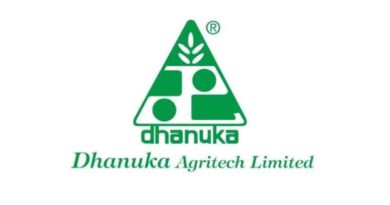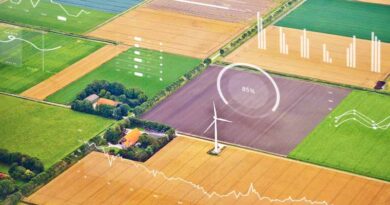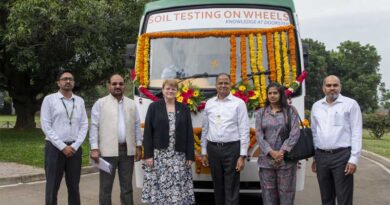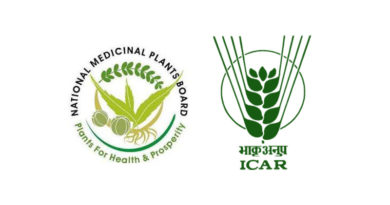Agritech Platform Market Valued at US$ 11.1 Billion
07 May 2024, New Delhi: The AgriTech platform market has emerged as a dynamic and rapidly expanding sector, driven by the increasing demand for efficient and sustainable farming practices. With a global market valued at US$ 11.1 billion in 2021 and projected to soar to US$ 39.9 billion by 2032, these platforms are poised to reshape the landscape of agriculture worldwide.
This introduction serves as a gateway to explore the multifaceted world of AgriTech platforms. We will delve into the pivotal role these platforms play in providing farmers with access to essential resources, knowledge, and insights. Moreover, we will examine the driving forces behind the adoption of AgriTech platforms, particularly in emerging economies grappling with challenges such as low crop yields and market volatility.
Through this exploration, we aim to shed light on the transformative potential of AgriTech platforms in enhancing agricultural productivity, sustainability, and profitability. Join us as we navigate the exciting developments and opportunities in the AgriTech platform market, shaping the future of farming and food production on a global scale.
Empowering Farmers Through Agritech Platforms and Smartphone Integration
The widespread adoption of agritech platforms, coupled with the high penetration of smartphones, is revolutionizing the way farmers manage their fields and implement scientific techniques. These platforms facilitate access to crucial agricultural inputs like seeds, fertilizer, and equipment, while also imparting knowledge on product quality and best practices.
Despite facing numerous obstacles such as unpredictability, low yields, and a lack of reliable information, farmers, particularly in emerging nations, are in need of support to enhance their farming practices and achieve sustainable development. Agritech platforms address these challenges by providing farmers with better equipment, timely information, and sincere services, ultimately driving market-based economic growth.
The integration of agritech has significantly improved efficiency, connectivity, and knowledge sharing in agriculture. Farmers now have access to a plethora of mobile-based tools that empower them to make informed decisions. With the help of smartphones, farmers can harness technologies like Big Data, predictive analytics, Artificial Intelligence (AI), and Machine Learning (ML) to access information on various aspects of farming, including fertilizers, subsidies, weather forecasts, and market pricing.
The agritech platform market is poised for substantial growth, with an estimated CAGR of 12.4% between 2022 and 2032, surpassing the previous growth rate. According to Persistence Market Research, agritech platforms are also revolutionizing the supply chain for fresh food by facilitating direct connections between farmers and stakeholders such as eateries and merchants. This streamlined supply chain not only benefits farmers by increasing profits and ensuring faster payments but also provides consumers with superior produce at competitive prices.
Unlocking New Horizons: The Rise of Agriculture Automation
In today’s agricultural landscape, the advent of automation is reshaping traditional practices, ushering in a new era of efficiency and productivity. Repetitive tasks and procedures are being seamlessly replaced by automated machinery such as drones, smart tractors, and watering systems, optimizing the utilization of labor for activities like harvesting, fruit picking, spraying, planting, seeding, and weeding.
However, the scope of agricultural innovation extends far beyond the mere automation of physical labor. It encompasses the automation of processes and swift responses to data-driven insights. For instance, consider the utilization of remotely controlled harvesting vehicles equipped with GPS guidance systems. These vehicles can be efficiently managed and controlled by a single operator, leading to a significant reduction in human error and an overall increase in production efficiency over time.
As automation continues to proliferate within the agricultural sector, it opens up new possibilities for enhancing productivity, minimizing resource wastage, and driving sustainable practices. By leveraging cutting-edge technologies, farmers can not only streamline their operations but also adapt swiftly to changing environmental conditions and market demands.
The rise of agriculture automation represents a paradigm shift in the way we cultivate and harvest crops, paving the way for a future where precision, efficiency, and innovation converge to meet the growing global demand for food security and sustainability.
Regional Dynamics of Agriculture Automation
North America:
North America stands at the forefront of agriculture automation, boasting advanced technology adoption and large-scale farming operations. The region leads in the utilization of automated machinery such as GPS-guided tractors, drones for crop monitoring, and robotic harvesting systems. Despite initial high investment costs and the requirement for skilled labor, North America’s agriculture automation market is buoyed by favorable government policies and growing awareness of its benefits.
Europe:
Europe’s agriculture sector showcases a diverse landscape of farming practices and varying levels of automation adoption. Technologically advanced countries like the Netherlands and Germany lead in precision farming and robotics, while others are gradually catching up. Regulatory hurdles, particularly concerning data privacy and environmental concerns, pose challenges. Nevertheless, Europe remains a hub of innovation in agriculture automation, with increasing investments in research and development and collaborations between academia and industry.
Asia-Pacific:
The Asia-Pacific region presents vast opportunities for agriculture automation driven by rising demand for food security and agricultural modernization efforts. Countries like China and Japan are spearheading adoption with technologies such as drones, robotic harvesters, and AI-powered farm management systems. Challenges include tailoring solutions for smallholder farmers, infrastructure limitations, and affordability issues. However, government initiatives and private sector investments are accelerating adoption to boost productivity and sustainability.
Latin America:
Latin America exhibits a blend of traditional farming practices and modernization initiatives, with varying levels of automation adoption across countries. Brazil leads in precision agriculture technologies, leveraging GPS-guided machinery and satellite imagery. Challenges include limited access to capital for small farmers and technology transfer barriers. Despite obstacles, Latin America holds significant potential for agriculture automation, supported by growing awareness and government programs aiming to enhance productivity and sustainability.
Future Outlook for Agriculture Automation
As agriculture automation continues to evolve, the future outlook is characterized by rapid technological advancements, increased integration of AI and data analytics, and broader adoption across diverse farming practices. With the ongoing digital revolution, automation is poised to play an even more significant role in transforming the agricultural landscape. Innovations such as autonomous farming machinery, robotic assistants, and smart sensors will redefine how farming operations are conducted, leading to higher efficiency, precision, and sustainability.
Furthermore, the convergence of automation with other emerging technologies like Internet of Things (IoT) and blockchain will enable seamless connectivity and data-driven decision-making throughout the agricultural value chain. Farmers will have access to real-time insights on crop health, soil conditions, and weather patterns, empowering them to optimize resource utilization and mitigate risks effectively. Additionally, advancements in machine learning algorithms will enable predictive analytics, allowing farmers to anticipate and proactively address challenges such as pest outbreaks and yield fluctuations.
Moreover, the future of agriculture automation will not only focus on large-scale commercial farms but also on smallholder and subsistence farmers, addressing their unique needs and constraints. Efforts to develop affordable and accessible automation solutions tailored to small-scale farming practices will democratize access to technology and contribute to inclusive agricultural development.
In conclusion, the future of agriculture automation holds immense promise in revolutionizing global food production, enhancing resilience to environmental challenges, and ensuring food security for a growing population. By embracing innovation and fostering collaboration between stakeholders, we can harness the full potential of automation to create a more sustainable and equitable agricultural future.
The above summary is part of a report titled ‘AgriTech Platform Market’ by Persistence Market Research Pvt. Ltd.
Also Read: PAU Registers First Biocontrol Agent for Foot Rot Disease Management in Basmati Paddy
(For Latest Agriculture News & Updates, follow Krishak Jagat on Google News)















